Indian pharma is at a turning point. For decades, field reps carried the weight of marketing on their shoulders. Today, the model has shifted. Doctors expect meaningful engagement across multiple touchpoints, including face-to-face, email, WhatsApp, webinars, and even regional portals. Patients too are demanding digital-first support, not just awareness campaigns. At the same time, compliance is tightening with UCPMP 2024, and marketing teams are under pressure to prove ROI for every rupee spent. This is where omnichannel marketing pharma stops being a buzzword and becomes the central lever for growth.
Done right, it helps with HCP journey mapping, accelerates compliant content delivery, and makes doctor and patient engagement measurable. Done poorly, it’s just another set of disconnected campaigns adding noise instead of value. The reality is simple: pharma marketers in India can no longer afford to treat omnichannel as an afterthought. It is the backbone of modern doctor engagement and the only sustainable way to build trust with both HCPs and patients.
Section 1: Why Omnichannel Matters Now
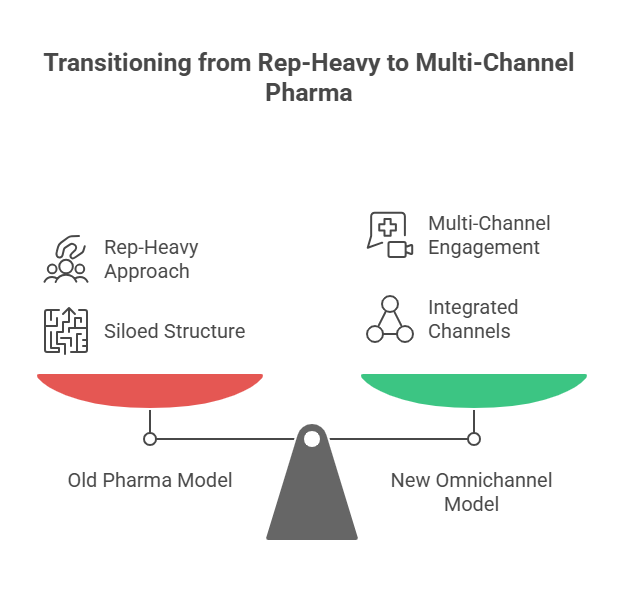
Doctors are digital-first, and pharma is catching up
Ten years ago, a rep’s visit was the only reliable way to influence prescriptions. Today, that’s not true. Most doctors in India spend part of their day consuming digital content through medical portals, webinars, WhatsApp updates, and email newsletters. In fact, a growing share of doctors now prefer asynchronous, digital-first communication over in-clinic pitches.
Yet pharma marketers still behave as if the rep visit is the only channel that counts. Campaigns are planned in silos: digital on one side, field force on the other. The result? Missed opportunities, wasted budgets, and frustrated doctors who get bombarded with irrelevant messages.
That’s why digital marketing in pharma has become more than an add-on. It’s the entry point to engagement. Doctors are signaling their preferences online every day. The challenge is: are you listening?
Compliance is non-negotiable
For years, pharma marketing in India carried the reputation of being gift-driven or event-heavy. UCPMP 2024 has put an end to that. Compliance is no longer an operational detail; it’s a board-level issue. Every touchpoint with a doctor needs to stand up to scrutiny. Every patient campaign must be auditable.
This makes doctor engagement on digital channels in pharma a compliance test as much as a marketing opportunity. A fragmented stack with no audit trail is a liability waiting to happen. A unified omnichannel approach, on the other hand, creates traceability across every interaction, keeping your brand safe while building credibility with regulators and doctors alike.
The ROI problem
Pharma spends crores every year across reps, conferences, campaigns, and digital experiments. Ask a CMO one simple question: “What actually worked with your most valuable doctors?”, and most can’t answer.
That’s because when channels don’t talk to each other, ROI is impossible to prove. Omnichannel solves this. By unifying touchpoints into a single HCP journey, marketers can finally see where engagement is happening and what moves the needle. This is where a pharma omnichannel platform in India changes the game; it doesn’t just run campaigns, it connects the dots between them.
Section 2: The HCP Journey Challenge
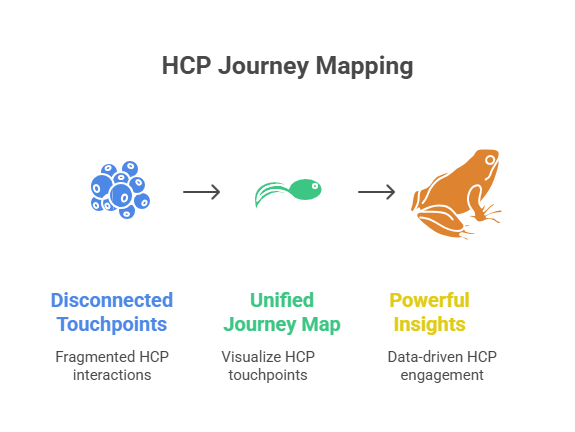
Why pharma is flying blind
Pharma marketers juggle CRM systems, digital agencies, WhatsApp updates, and event organizers. The result? Fragmented data scattered across multiple silos. Brand managers rarely get a complete view of any single HCP.
Without that visibility, decisions are made on instinct, not evidence. Doctors feel the impact: they get generic messages that don’t reflect their interests or previous interactions. Engagement suffers, and marketing ROI remains unproven.
What an HCP-centric omnichannel journey unlocks
A true omnichannel platform pulls data from every system such as CRM, email, WhatsApp, webinars, and portals, and maps it into a single, timeline-based journey for each HCP. Suddenly, the blindfold comes off.
You can see that Dr. Sharma ignored five emails but attended a webinar on a specific therapy area. You can identify that Dr. Singh downloaded a patient support guide, but never followed up with a rep. This is the foundation of omnichannel HCP marketing: clear visibility that allows personalization without guesswork.
Beyond personalization, it also provides a compliance trail. Every touchpoint is documented, every message auditable. In an environment where regulations are tightening, that alone is a competitive advantage.
Tier 2 and Tier 3 India: the missed opportunity
Most pharma marketing strategies are built for metros. But real growth is in Tier 2 and Tier 3 cities. Doctors there are active on digital, especially WhatsApp and mobile-first portals, but pharma hasn’t built systematic engagement for them.
An omnichannel platform in India must be designed for this reality. Regional languages, mobile-first access, and lightweight digital formats matter. When you meet doctors where they are, engagement jumps dramatically. This is how omnichannel shifts from being a campaign idea to a genuine growth driver.
Section 3: Fixing Pharma’s Content Bottleneck
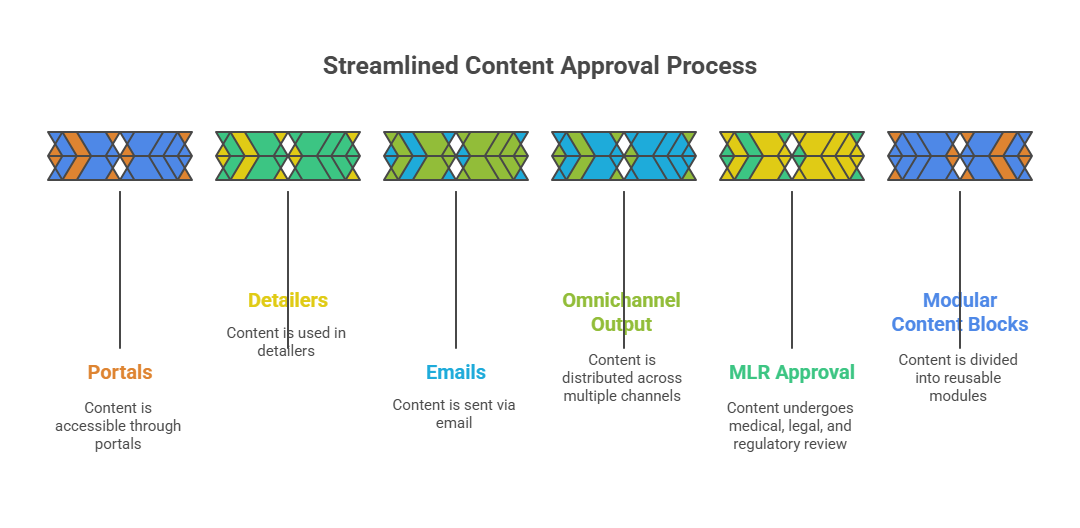
Why speed matters more than ever
Even when pharma marketers know what to do, they’re stuck waiting. Content is created in silos, pushed through endless Medical-Legal-Regulatory (MLR) reviews, and delayed for weeks. Meanwhile, competitors launch faster and capture attention.
In omnichannel execution, speed is everything. If it takes months to get a piece of content approved, the journey mapping and analytics don’t matter. Doctors have already moved on.
Modular content as the solution
The answer isn’t to cut corners; it’s to work smarter. A modular content engine transforms content creation from linear to agile. Instead of building assets from scratch, teams assemble them from pre-approved building blocks: claims, charts, disclaimers, and templates.
This is where compliance and speed align. Eighty percent of content is already approved before it even enters the MLR queue. Reviews shrink from weeks to days. Campaigns go live faster. This is what Velocity brings to omnichannel execution; speed without sacrificing compliance.
Personalization at scale
Doctors expect content tailored to their specialty, interests, and region. Patients expect support programs that feel relevant to their journey. Without modular systems, creating that level of personalization is impossible.
With a modular engine, personalization becomes scalable. One set of approved content blocks can generate dozens of variations, for cardiologists, diabetologists, oncologists, or regional audiences. That’s how patient support programs in pharma and patient engagement pharma move from aspiration to reality.
Section 4: Building the Omnichannel Platform for India
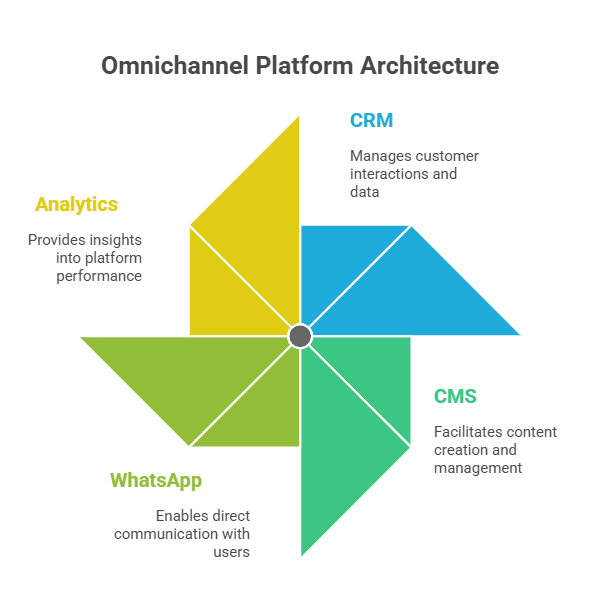
What a pharma omnichannel platform really looks like
Omnichannel isn’t just running campaigns across email, web, and WhatsApp. It’s a connected system where every channel talks to the same source of truth.
A real pharma omnichannel platform in India integrates:
- CRM data from rep visits.
- Digital engagement from emails, webinars, and portals.
- WhatsApp and mobile interactions from Tier 2/3 outreach.
- Analytics that map everything back to HCP journeys.
When all of this sits on one platform, brand managers can finally orchestrate campaigns instead of running them in isolation.
Compliance built into the workflow
Compliance can’t be a final check at the end. It must be baked into the workflow. Role-based access, audit trails, consent management, and automated disclaimers should be standard features.
This makes compliance not a barrier but an enabler. Teams move faster because they know every asset, every interaction, is already aligned with UCPMP and other regulatory frameworks.
Execution-first mindset
Many pharma companies spend months planning “omnichannel strategies” and end up with slides, not outcomes. The reality is that execution is the only strategy that matters.
Start small with a pilot: one brand, one region, one therapy area. Map the journey, modularize content, measure engagement. Then expand. Omnichannel isn’t a one-time project. It’s a discipline built step by step.
Section 5: From Omnichannel to Next-Best-Action

Unified data plus modular content equals intelligence
When HCP journeys are mapped and content is modular, you create the perfect foundation for intelligence. Data shows what doctors respond to. Modular systems make it possible to react quickly.
That’s when AI comes in, not as a gimmick, but as the logical next step. Intelligence engines can suggest the “next best action” for every doctor: send an updated case study, invite to a webinar, trigger a rep visit.
Why Indian pharma needs predictive insights
Doctors are busy, skeptical, and selective. Guesswork doesn’t work anymore. Predictive insights, based on real engagement data; cut through the noise. They tell marketing teams where to focus effort and where to stop wasting time.
For Indian pharma, this is crucial. Competition is intense, and engagement windows are short. Intelligence-led omnichannel ensures every rupee is optimized.
The boardroom conversation
At the end of the day, omnichannel is about more than campaigns. It’s about proving impact to the board. With a unified system, marketing leaders can show exactly how investments translated into engagement, prescriptions, and patient outcomes.
This is what makes omnichannel a boardroom issue, not a marketing buzzword. It’s about visibility, compliance, speed, and ROI: all in one system.
Conclusion: The Next Move for Pharma Leaders
The shift is clear. Doctors are digital. Patients expect support. Compliance is tight. Budgets demand ROI.
The old model of reps and siloed campaigns won’t survive this reality. The future belongs to companies that make omnichannel marketing in pharma their operating system. That means unifying HCP journeys, fixing content bottlenecks, and building execution-ready platforms.
Here’s the thing: this isn’t theory. It’s execution. The pharma companies that act now will win share of mind, build trust with regulators, and prove ROI in the boardroom. If you’re ready to see what omnichannel execution looks like in practice, book a working session with our team. We’ll map your HCP journeys, show how modular content accelerates compliance, and design a pilot that proves impact in weeks, not months.
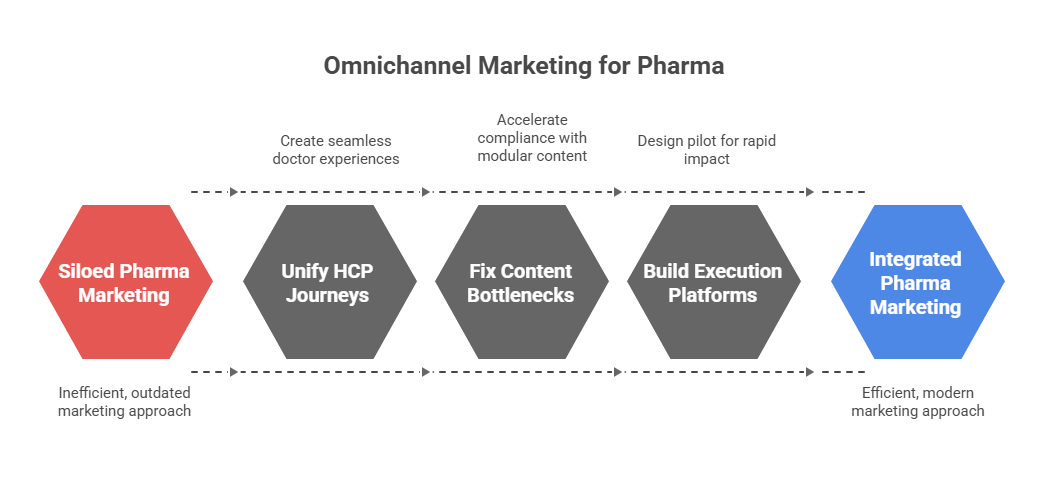
Frequently Asked Questions:
1. What are the 4 C's of omnichannel?
The 4 C’s are Consistency, Convenience, Context, and Content. Together, they ensure every doctor or patient interaction feels connected, relevant, and easy to engage with across channels.
2. What is omnichannel marketing with an example?
Omnichannel marketing integrates all touchpoints. For example, a doctor receives a webinar invite by email, reminders via WhatsApp, and a rep follow-up: one unified journey, not separate campaigns.
3. What is the difference between multichannel and omnichannel marketing pharma?
Multichannel means using many platforms separately. Omnichannel unifies them, giving pharma marketers a single doctor journey view, ensuring compliant, consistent engagement across every channel.
4. What are the 4 P's of marketing in pharma industry?
The 4 P’s are Product, Price, Place, and Promotion. In pharma, these are shaped by regulations; so compliance, patient safety, and doctor trust guide every marketing decision alongside the basics.
5. Why is it called omnichannel?
It’s called omnichannel because it spans “all channels.” Instead of siloed campaigns, every touchpoint, like digital, physical, or field, works as one system to deliver a unified brand experience.





